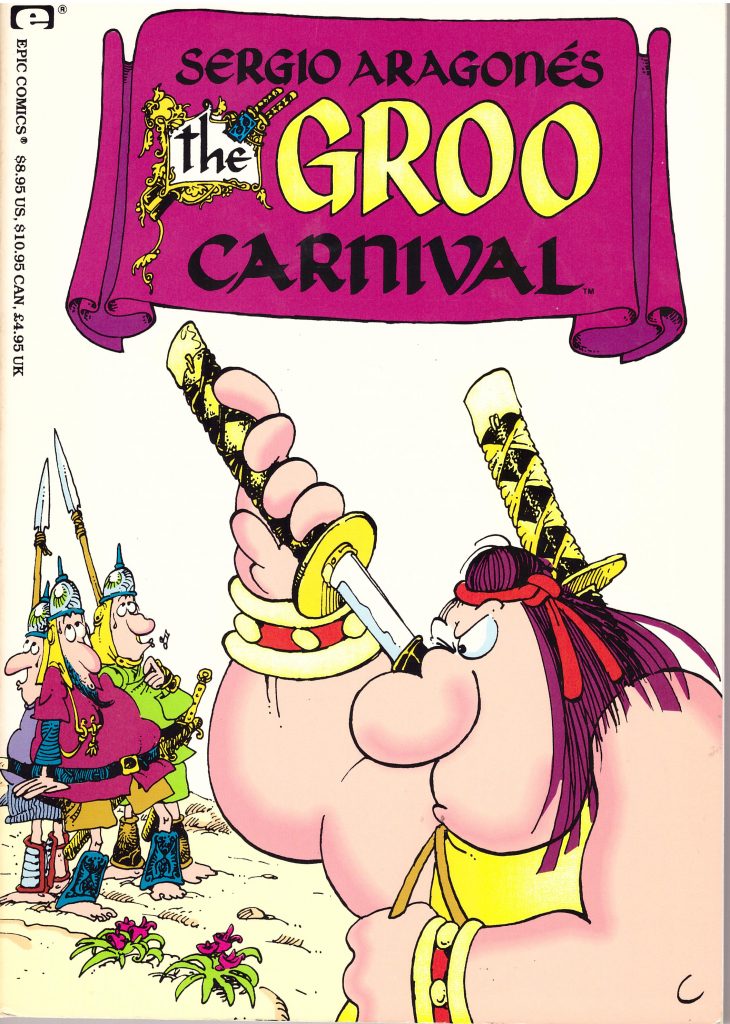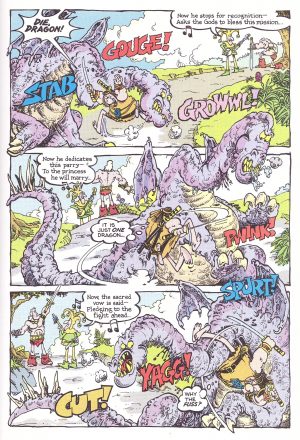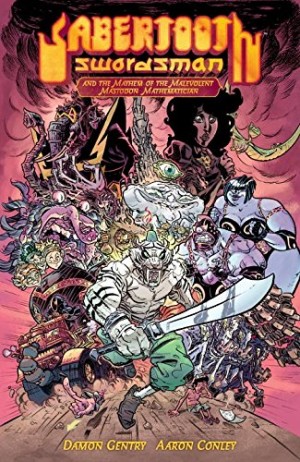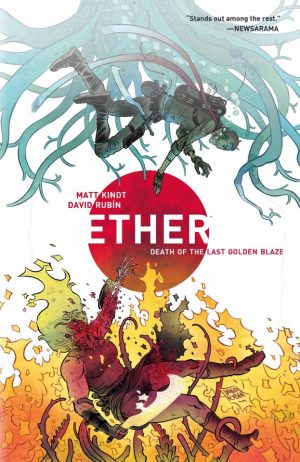Review by Ian Keogh
The fifteen original alphabetically titled Groo books follow a remarkably similar and consistent pattern of four well plotted stories, each featuring magnificent cartooning and witty scripts. Sometimes, as here, a story will be continued over two or three episodes, but there’s rarely a dip in quality, every story an above average laugh feast. Groo’s ineptitude often carries the slapstick into uncharted territory, and creators Sergio Aragonés and Mark Evanier keep adding new people for Groo to bounce off. Sometimes literally. Here it’s Arcadio, handsome doer of derring-do, a mythically heroic figure over whom the women swoon, despite a landing strip of a chin to match Desperate Dan. Arcadio preceded Gaston in Disney’s Beauty and the Beast, and was surely an inspiration.
Despite taking an instant dislike to Arcadio, Groo needs a job and Arcadio is short a lackey for his latest quest, already having the Minstrel in tow to sing his praises. The Minstrel features heavily over the two parts, meaning Evanier has to work overtime on the rhyming lyrics to his songs. The plot repeats the joke of Arcadio making extensive preparations prior to any conflict, by which time Groo has done the job for him, but Arcadio takes the credit for the killing stroke.
The Sage returns in the opening story, his misfortune being to meet Groo on his route. It continues via a formula familiar to Groo readers, the inept barbarian between two villages each with a strange custom that applies to them and them alone, with Groo managing to upset the status quo. In this instance there’s a village where the apples they grow are sacred, and the other raises pigs considered sacred. In his afterword Evanier has little to say about the story, and indeed as part of a run it’s not memorable, yet read in isolation it’s a smart plot perhaps stretched a little too far, but offering the requisite doses of mayhem and hilarity.
Balancing this, for a long time Evanier considered the final story his favourite, and it’s a prime piece of slapstick founded on Groo encountering a troupe of actors, but unable to differentiate between reality and fiction. Aragonés cranks up the tension superbly, first concentrating on Groo’s complete idiocy, then throwing in a great twist before an ending that matches the remainder of the plot. Evanier’s unsure about why he likes it so much, other than the satirising of actors. Perhaps it’s because while all Groo material is tightly conceived, in this instance everything is perfectly structured and just slots into place exceptionally. It’s a gem, and the best of this series to date. We continue with The Groo Dynasty.





